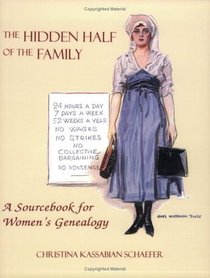Search -
The Hidden Half of the Family: A Sourcebook for Women's Genealogy
The Hidden Half of the Family A Sourcebook for Women's Genealogy
Author:
By law and by custom women's individual identities have been subsumed by those of their husbands. For centuries women were not allowed to own real estate in their own name, sign a deed, devise a will, or enter into contracts, and even their citizenship and their position as head of household have been in doubt. Finding women in traditional genea... more »
Author:
By law and by custom women's individual identities have been subsumed by those of their husbands. For centuries women were not allowed to own real estate in their own name, sign a deed, devise a will, or enter into contracts, and even their citizenship and their position as head of household have been in doubt. Finding women in traditional genea... more »
ISBN-13: 9780806315829
ISBN-10: 0806315822
Publication Date: 10/1/1999
Pages: 298
Edition: 1st
Rating: ?
ISBN-10: 0806315822
Publication Date: 10/1/1999
Pages: 298
Edition: 1st
Rating: ?
0 stars, based on 0 rating
Publisher: Genealogical Publishing Company
Book Type: Paperback
Members Wishing: 9
Reviews: Amazon | Write a Review
Book Type: Paperback
Members Wishing: 9
Reviews: Amazon | Write a Review
Genres:




